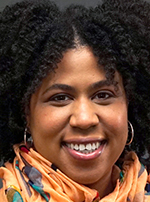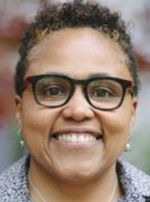Critical Race Theory and Statistical Analysis: What You Need to Know
The Justice, Equity, Diversity, and Inclusion (JEDI) Outreach Group Corner is a regular component of Amstat News in which statisticians write about and educate our community about JEDI-related matters. If you have an idea or article for the column, email the JEDI Corner manager at jedicorner@datascijedi.org.
Emily Griffith is an associate professor of the practice in the department of statistics at North Carolina State University. She has been a member of the JEDI Outreach Group since its inception in 2021.
Good statistical practice involves understanding the frameworks in which we obtain data, perform inference, and apply findings. One such framework, critical race theory, is widely known, widely criticized, and widely misunderstood.
Critical race theory is a legal and academic framework that considers the role of systemic racism in American society. This framework examines the effects of racial bias in institutions and structures, not just the bias of individuals. It also emphasizes that racialization—the process by which society organizes racial groups—is a unique driver of racial disparities, over and above differences in other socioeconomic factors associated with race, according to Chandra Ford and Collins Airhihenbuwa in their American Journal of Public Health article, “Critical Race Theory, Race Equity, and Public Health: Toward Antiracism Praxis.”
To explain and motivate the importance of critical race theory to statisticians, the JEDI Outreach Group sponsored the 2023 Joint Statistical Meetings session “Critical Race Theory for Statisticians: Incorporating CRT into Statistical Analysis.” Organized by David Corliss of Grafham Analytics and chaired by Kim Sellers of North Carolina State University, the session featured panelists Melody Goodman of New York University, Stephanie Cook of New York University, and Scarlett Bellamy of Boston University. Rebecca Andridge of The Ohio State University served as a discussant.
Goodman presented an analysis of Stand Your Ground laws and defendant convictions in Florida from the PubMed article “Race, Law, and Health: Examination of ‘Stand Your Ground’ and Defendant Convictions in Florida,” which she and several coauthors wrote. Her presentation demonstrated how critical race methodology, which draws on tenets of critical race theory and focuses on structures embedded with racism, provides a vocabulary and structure for examining public health outcomes. Stand Your Ground laws expand the right to self-defense by allowing individuals to defend themselves using deadly force when they believe, reasonably, they are in danger. Several studies mentioned in FRONTLINE’s “Is There Racial Bias in ‘Stand Your Ground’ Laws?” have shown these laws increase the number of homicides and, due to racial bias, result in the increased killing of Black people specifically.
Goodman made an interesting and essential point about the importance of clearly defined vocabulary to discuss these issues. For example, race, itself, is not a risk factor for specific public health outcomes, as it is a social construct and not a biological or genetic factor. When race is used, it is a proxy measure for racism, discrimination, and other sociodemographic variables we do not necessarily collect. Statisticians and other scientists need to understand contexts and structures leading to poor health outcomes.
In Goodman’s Stand Your Ground analysis, race, itself, is not a risk factor, but members of a racial group are at high risk of racial profiling and discrimination. Her analysis found cases involving white victims were more likely to result in a conviction compared to those involving non-white victims.
Cook’s presentation built on the ideas presented by Goodman. In her talk, “How Do We Incorporate a CRT Perspective in Our Statistics Courses?,” Cook focused on teaching students to think carefully about the scientific research questions we are interested in and the specific metrics associated with those questions. She emphasized measures of race, ethnicity, and other identity-based variables should have meaning for the population they describe. She also introduced the concept of quantitative intersectionality, a framework that describes how group membership (e.g., race, gender, class) is intertwined and influenced by overarching systems of power and oppression.
For example, health disparities experienced by Black women cannot be understood as a grouping of the effects of being “Black” and being a “woman,” but are best understood as the specific experiences of being a Black woman compared to other intersecting groups (e.g., Black men, white men, and white women).
Cook gave several practical examples of using this concept, even in an introductory course. One was that, for a two-sample t-test, the groups could be “Black women” and “Black men,” instead of modeling the same effect of gender identity across race. This simple shift introduces the concept of intersectionality to students and will push them to think more critically about the data we collect and conclusions we draw.
Cook pointed out that this is an exciting time to be involved in this work, as there is so much being done. She concluded with this idea: “Statisticians can help make the invisible visible. But we first must remove any and all stigma associated with discussing power and privilege.”
Bellamy’s talk, “Measuring People and Thoughtfully Representing Them in Statistical Models,” took the idea of incorporating critical race theory one step further. While Goodman focused on using it in research and Cook discussed using it in the classroom, Bellamy discussed incorporating the underlying themes of critical race theory into our research teams, including faculty and staff hiring and evaluation and student recruitment. She mentioned diversity work is often viewed as a form of benevolence or work we do because we should. However, diverse teams improve the science by increasing rigor and pursuing more broadly relevant problems than are addressed by teams with limited diversity.
One example Bellamy shared involved a cancer amenability index. Parisa Tehranifar and coauthors wrote that as amenability—or the likelihood cancer will respond well to treatment—increases, white patients have substantially better outcomes than others in their PubMed article titled “Medical Advances and Racial/Ethnic Disparities in Cancer Survival.” This disparity does not exist for unamenable or hard-to-treat cancers. The improvement in outcomes due to treatment is only available to people in socially advantaged groups who can obtain medical care. Specifically, the improvement in outcomes based on new treatment development benefits white patients first. White patients do not have a biological reason for better outcomes but have a socioeconomic and demographic reason for better outcomes—meaning these differences are related to structural racism rather than biology.
Wrapping up the discussion, Andridge shared a redlining map of Columbus, Ohio, and described research by Jeffrey Wing and coauthors in the PubMed article “Historic Redlining in Columbus, Ohio, Associated with Stroke Prevalence” showing stroke rates today align with historical redlining practices. She emphasized that the impact of systemic racism is measurable and stressed that, as statisticians, we need to familiarize ourselves with the language of critical race theory and learn what it is and is not—exactly as we would when learning a new statistical technique.
Andridge also called on statisticians to interrogate their metrics and ensure their models are measuring all factors of interest in a rich, clear, and accurate way. She emphasized that incorporating a critical race theory framework into our work is an evidence-based approach and re-emphasized Bellamy’s closing point: Leave the profession better than you found it.
Session attendees were engaged and asked questions leading to discussions about secondary data analysis, sampling strategies to reach underserved and/or historically marginalized populations, and appropriate statistical methodology.
If you found this content interesting, you can join the JEDI Outreach Group.






















Leave your response!